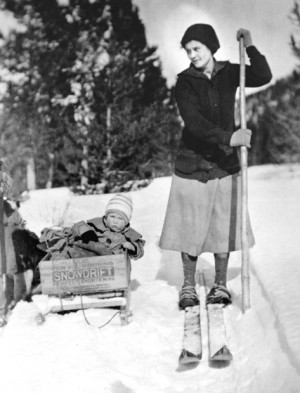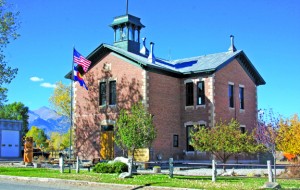By John Mattingly
Back in the late fall of 1976, I traveled down to Springfield, Colorado to participate in the Farmer’s Strike.
I’d started farming in the late 60s when the markets got really good, especially in 1973 after the first Oil Embargo when commodity prices reached record high levels. When commodity prices fell off precipitously in 1976, I was all for letting the world know it was wrong.
The Farmer’s Strike Force met in the Springfield town hall building, a town famous for being, long ago, “The Broomcorn Capital of the World,” as declared by a withering sign at the town limits. Broomcorn is the stiff bristly stuff of brooms, and I never understood why they call it corn, because it’s a lot more like straw. In any case, Springfield grew the stiff broomcorn until the late 60s when a foreign competitor took over the market in a maneuver I never fully understood.
The farmers at this organizational meeting for the Farmer’s Strike stood around in tight clusters of angry and vocal farmers, each man with a coffee cup in one hand, a donut in the other. The walls were papered with cute sayings, such as TOO BROKE TO PAY ATTENTION, ANSWERS 25 CENTS, CORRECT ANSWERS $25. One I’d seen many times that ran out a logical deduction that no one in the U.S. was actually working, except you and me. The room smelled faintly of diesel fuel.
One faction in the Strike group had a simple plan to shock the United States food consumer. The plan involved farmers buying their crops on the Futures Market rather than producing those crops. If this were done, farmers, processors, and speculators would hold a large number of contracts for, say, wheat. But there wouldn’t be enough actual wheat to meet all the contracts, so prices would go up astronomically.
There’s no question the plan would work, if enough farmers could be persuaded to actually do it. The big problem facing the striking faction that advocated this plan was that most farmers distrusted the Futures Markets even more then they felt beat up by the Actual Markets. A majority perception of the Futures Market involved anti-Semitic remarks and horror stories of a neighbor or crazy uncle who went bankrupt after a series of margin calls.
I had acquired a Series 3 SEC license at the time and traded commodities alongside my farming operation, clearing transactions through the local Dean Witter office. I came to the Strike meeting at the request of the faction who wanted to use the Futures Market. I came to help explain and actuate Futures trading strategies designed to bring the U.S. food system to its knees. (I’d actually advocated the strategy of Buy the Futures and Park the Tractor in an interview for an article that appeared in Northern Lights, written by Tom Wolf.)
I met first with the Strike leader, a stoopy, big- boned wheat farmer with remarkably red cheeks and all the charisma of a scud missile. I recall that shaking his hand was like grabbing a catcher’s mitt, and he looked me in the eye to ask, right off the bat: “What’s the most important thing in farming?”
The question caught me off guard, partly because I was among total strangers and partly because I was still a relative novice at farming. No one had ever made me pass a pop quiz to enter my chosen field.
Tentative, but eager, I suggested, “The most important thing in farming is … to maximize capture of solar energy.”
“No,” said the Strike leader, looking at me like I was hugging an invisible tree. “Stay clear of the granola shit or the boys’ll eat you for lunch.”
“So … what is the most important thing in farming?”
“Timing. The right thing at the wrong time is still wrong, and the wrong thing at the right time is still right. Remember that.”
It’s a solid point, and I’ve always remembered it.
However, it would have been handy if the farmers in attendance at the early meeting of the Farmer’s Strike had thought more about the timing of their Futures Market positions than how much time it would take to drive their tractors to Washington, D.C. Or if they had been more dedicated to actually impacting their market share than getting the usual Jeffersonian media coverage championing the small farmer.
I didn’t drive my tractor to D.C. In fact, I didn’t even drive across my fields. I followed the plan of buying wheat and corn on the Futures Market and parking my farm machinery for the 1977 season and made a nice profit. Since then, using the Futures and Options Markets has remained a substantial part of my farming strategy and may explain why I can make a claim made by few farmers. In 42 years, I never had a year in which I did not make a profit from my farming operations.
In 1976, however, the reason I didn’t join the tractorcade to D.C. owed simply, and in retrospect curiously, to my not seeing myself as a “small farmer.” I farmed 760 irrigated acres and thought of myself as a big farmer. Only when I did the math on my market share did I realize that all farmers are small. I produced about 80,000 bushels of wheat and 60,000 bushels of #2 yellow corn in the late 1970s. I had a capital investment in land, water, and machinery of close to $2 million, and that seemed big to me.
Yet, my market share in the world wheat and corn markets was so small it didn’t elicit a digit on my adding machine.
So here is the anomaly: farmers are in control, because they grow food, right? And we all have to eat, right? Yes, and no. No single farmer has any real market share, so farmers as a group have no control. Farmers are perceived as having the world by the tail with a downhill pull, but are actually looking at the back end of an ascending jackass. It isn’t just that farmers are independent and unlikely to organize, it’s that even if farmers did organize, they could never get enough market share to influence prices. Except, of course, if a substantial majority of farmers could ever follow the minority plan of the 1976 Farmer’s Strike and buy the Futures Market contracts for the crops they produce, but refuse to produce the actual crop.
It’s interesting to me that, even today, some 35 years after the Farmer’s Strike – when most farmers are well connected to the markets through various electronic opportunities – this ingenious strategy of buying the futures and parking the tractor hasn’t re-emerged. Most farmers I know who have survived the half dozen or so “stress tests” put to the agricultural economy over the last three decades use the Futures and Options Markets directly or indirectly, but few use these markets as an economic weapon to get a fair price for their production.
It seems so simple. Each farm is, in fact, a giant solar collector and the farmer controls, to a large extent, how much of that energy is released. The Arabs learned in the 1970s how a small reduction in output resulted quite quickly in huge increases in price. Farmer’s felt, and feel, the business end of that strategy, yet fail to grasp that this same pricing power is sitting right in front of them on their computer screen.
Over the years I’ve heard lots of explanations for why farmers don’t exercise pricing power through the Futures Markets: force of habit, enduring distrust of East Coast speculators and paper shufflers, imperfect information systems, confusion over timing and execution functions, and so forth. Perhaps the best explanation came from a farmer friend of mine when he said, “Farmers don’t know how to not produce.”
This seems to be true, though it seems to me that what farmers really need to do is learn to close down the output valve on their solar collector a few notches, buy that reduction on the Futures Market, and watch as prices move upward.
But why should farmers get higher prices for their crops? Isn’t food already expensive enough? That good loaf of bread that used to cost a buck is now crowding six. What if I told you that loaf should really cost you a twenty?
Next month, I’ll discuss why higher commodity (and thus food) prices are not only inevitable, but necessary.
John Mattingly cultivates prose, among other things, and was most recently seen near Creede.

